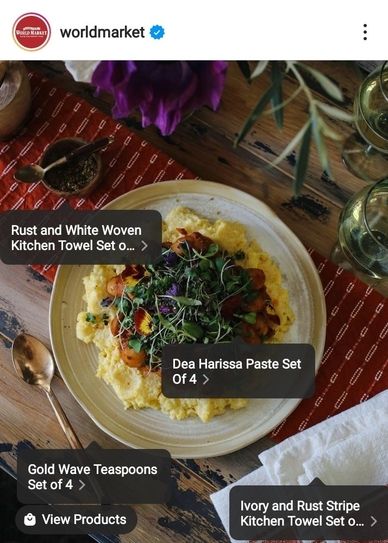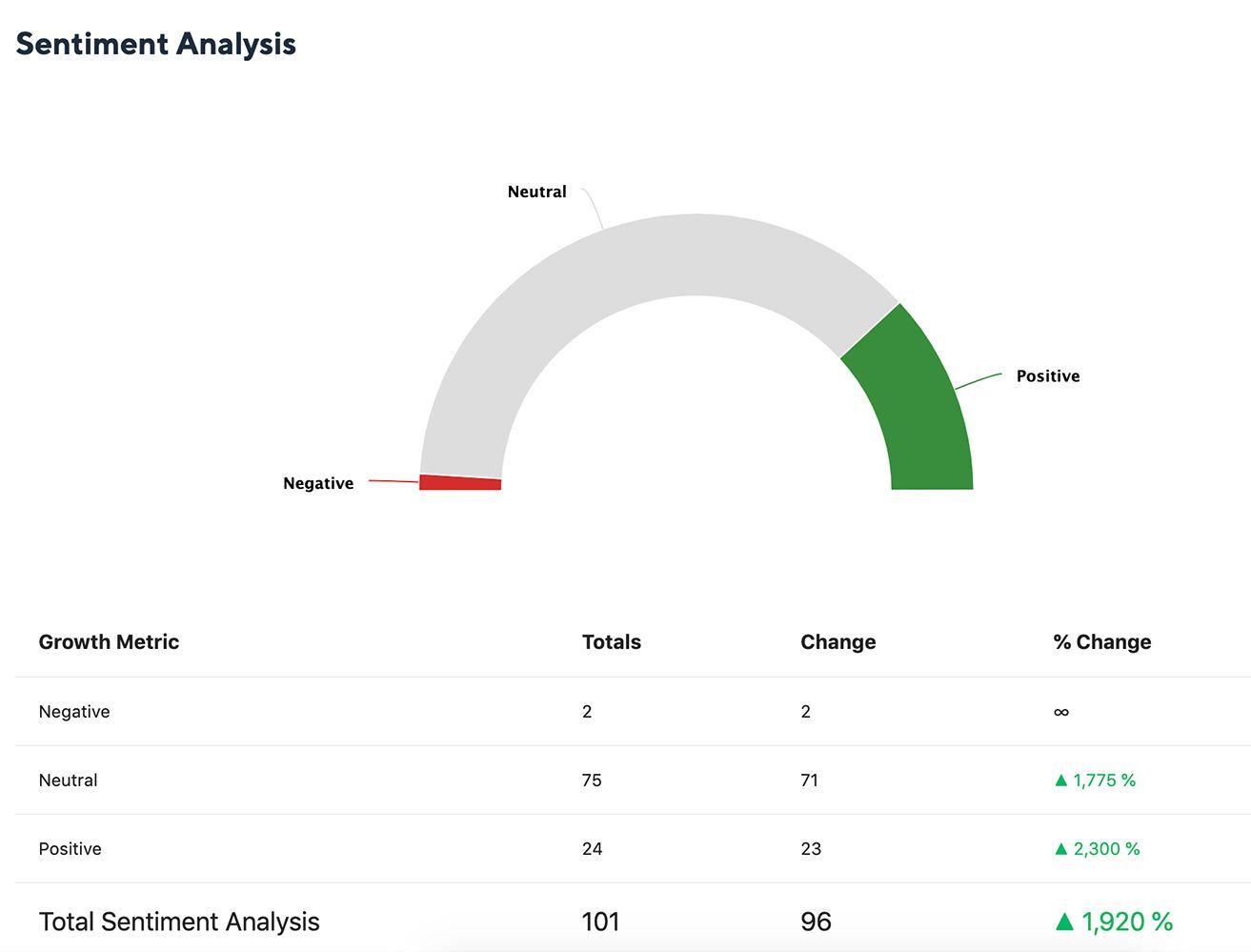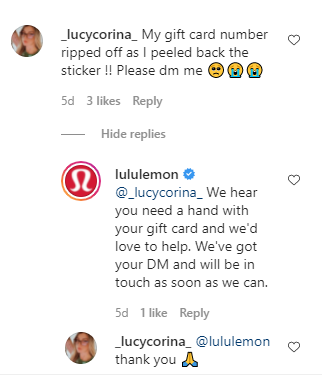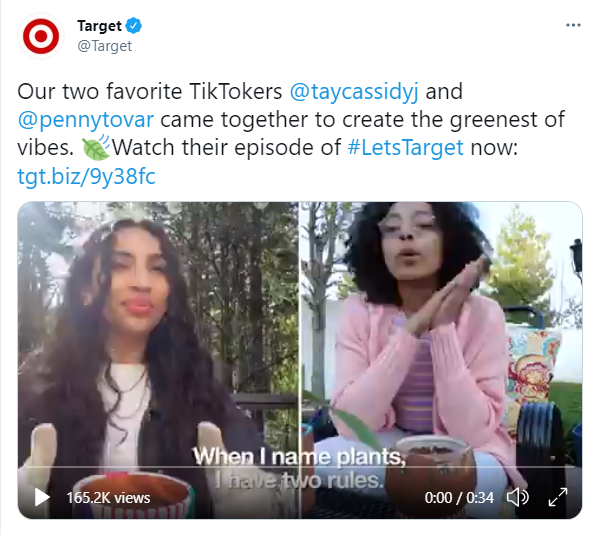With the internet making the world a smaller place, social media has enabled people to connect in real-time, share their stories, and establish stronger relations. In addition, it has trimmed the pathways between several businesses and their customers by streamlining the exchange of products, money, and services online.
Social media has become an extension of several brand and the perfect place for such brands to grow their business and leverage the power of community. If it's done the right way, you can build meaningful relations with your online audience and convert them into your customers.
Several brands utilize social platforms to attract customers and increase revenue, and the retail industry has not been left behind. Social media has become a critical driver of online sales growth for retail businesses in 2021. It has become an essential part of retail businesses as it offers access to a vast audience base and a unique level of engagement.
Social media for retail businesses is getting complicated, with several brands actively competing for a spot in the users feed. So now the question remains how to accelerate social media for your retail business's growth.
To help you master social media for retail businesses, this guide has ten tips that have the potential to increase your conversion rate through social media. Before that, let's understand the importance and benefits of using social media for retail businesses.
- Importance Of Social Media For Retail Businesses
- Benefits Of Using Social Media For Retail Businesses
- Tips to Master Social Media For Retail Businesses
You can directly jump to a section of your choice or keep scrolling.
Click here to download detailed infographic on tips to master social media for retail.
Importance Of Social Media For Retail Businesses
90% of marketers claim that marketing through social media has increased their business exposure.
But some retail businesses still prefer customers to walk into their brick and mortar store for purchase. They think, what is social media going to do for my business, and do I really need it? Here lies some of the most compelling answers and reasons to take your retail business on social media.
- Social media is a place where your potential customers hang out the most.
- By understanding your customer base and consumer behavior, you can identify customer pain points that can help you improve sales conversions by refining your product strategy to solve those pain points.
- Amplify customer experience by quickly connecting with your customers and prospects. No more long waiting hours to get in touch with customer support representatives
- By answering industry-specific questions, giving relevant advice, and sharing information, you can build authority in your industry and establish yourself as a thought leader.
- Connect with the customers who don't know your brand, as social media helps you to search out for such customers who are looking for similar products that you sell but aren't aware of your brand.
- Being active on social media consistently keeps you in front of your customer, so whenever they need or are likely to buy a product you sell, your brand clicks their mind first.
Benefits Of Using Social Media For Retail Businesses
When social media remains a way for most brands to throw ads at their customers, you can leverage the potential of social media for retail businesses to explore many more opportunities in the competitive landscape, such as the ones listed below.
Improve brand awareness
Social media becomes a key for boosting brand awareness and gaining visibility online by understanding the target audience. Compared to traditional methods marketing on social media is a lot cheaper and effective. Your marketing efforts can be maximized by relying your decisions on customer feedbacks and by measuring the campaign results data.
Increase consumer trust
Social media forms a two-way street for communication using which you can engage with your customers and ask them for feedback to improve your products and services. These interactions help customers to build trust in your brand and eventually form a trustworthy relation.
Increase conversion rate
Social media increases the probability of conversion by conveying your high product value proposition to the correct target audience. It is relatively easy to incentivize your customers through promotions by offering perks and gift cards to increase sales and conversion rates.
Improve customer experience
Whenever you receive feedback from your customers, it becomes an opportunity to improve your brand. Social media can be used to reach your customers faster and solve their issues.
Leverage social media for getting customers back
eCommerce has become a rapidly growing area for retail brands. Digital sales have seen a spike and have become even more important during the times of the COVID-19 crisis as companies selling through the physical store have been hit hard. There are chances of customers not making purchase for the first time when they visit your website. But you can redeem your chances of making sales through such customers by following up with them.
Tips to Master Social Media For Retail Businesses
1. Keep your eyes on social media trends
Your customers are the first ones when it comes to adopting the latest trend on social media. And if your brand does not remain on the same pulse, then you will find these customers slowly slipping from your store.
In fact, customers clamor for brands to be more socially aware than them. Effective social media for retail businesses works when you keep an eye on every trend rolled out.
By doing so, you will eventually find your reach improving as the outdated marketing tactics have zero to negligible return on investment. Understand that social media for retail businesses means much more than free exposure for your products.
Successful retailers are the ones that keep experimenting. Leverage multiple challenges by diversifying your efforts across several social media platforms. Change your content to fit according to each and every social media platform. Figure out the core message of your brand and replicate and repurpose it according to the platform to fit the needs of your target audience.
Example - See how Best Buy adopted the trend of floating text on their Twitter page.

Image Source: Best Buy Twitter
2. Create returning buyers through retargeting campaigns
About 96% of the people that visit a website for the first time are not ready to buy.
New website visitors have a higher bounce rate, and they are only half as likely to proceed to the final check-out.
But these data are not to dishearten you. On the contrary, if you see an opportunity in disparity, you would find that these customers provide you with a hint that they are probably searching for similar products like your sell and might purchase the next time from your website.
But, for that, you will have to appear again in front of the customers who once visited your website. And that's what retargeting does for you.
Using retargeting, your brand's paid ads are shown to shoppers who had earlier visited your website or people whose information you might have acquired through subscriptions.
In site retargeting, ads will be shown to users either on their social networks or in their search results on Google, YouTube, or other websites. In addition, dynamic retargeting sends specific ads to users who have visited particular pages, such as product pages.
To get the maximum ROI out of your retargeting campaign, create eye-catchy messages in ads with enticing calls to action. Do not forget to track and compare your retargeting effort across multiple channels. This will help you to optimize your campaign towards marketing objectives.
3. Collect feedback from your social customers
Customer feedback is like a guide resource for the growth of your business. By actively collecting customer feedback, you ensure that you never stray too far from the needs of your audience. The best resource to understand your customers is your customers.
Within those boldly said words of your customers on social media, find those gem points that make it easier for your brand to adjust and adapt with your customers. Customer feedback should remain at the heart of social media for retail business's growth.
Before you start to randomly collect feedback from your customers on social media, you need to understand and pinpoint why you are seeking their inputs. This will help you to identify the outcomes and your intention for collecting customer feedback.
Explore customer stories through online interviews on social media. Reaching out to your customers personally will open up a conversation that wouldn't have happened otherwise. Start with open-ended questions, get more specific, and be proactive in listening to your customers.
The best way to collect feedback in a way so as to get a candid response is to ask for one. To transform every message into an opportunity, inquire with your customers what they are struggling with most, what new features they would like to see or improve or just ask them what they like the most about your brand.
Example - See how the gifts and clothing brands, Imprint Products, put up their happy customer reviews on their Instagram page. With each review, they also tag the product about which the customer has given review, making it easier for potential customers to shop from Instagram itself.

Image Source: Imprint Products Instagram
4. Make shopping on social media hassle-free
72% of Millennial consumers indicate that it is essential for stores to offer them options that save time while shopping.
The digital revolution has created an urgency for brands to cater to their impatient customers. Social-savvy customers are looking for time-saving shopping experiences. Moreover, they desire a smart shopping experience across all channels. For instance, 31% of consumers are interested in purchasing products through a voice-controlled device. Hence, offer such options to your customers that help them save time in their customer journey.
Learn more about How To Create a Customer Journey Map For eCommerce.
The fewer the clicks, the higher your sales would be.
Shopping convenience is a crucial deciding factor in the purchase process. Social media for retail businesses has implemented several features for crafting a frictionless end-to-end purchase process with a few purchasing steps. Creating shoppable posts with your products tagged is one such feature.
What if, while scrolling through their social feed, your customers come across a product they want to purchase instantly. The social check-out feature removes any barrier between that moment of inspiration and the purchase process. Instagram and Facebook have come up with a check-out feature to direct people from your organic or paid post to final check-out without leaving the app.
Learn more about how to set up a Facebook Shop and Instagram Shop.
If your retail store does not have a website, still you can promote and sell your products through social media. Learn more about How To Sell On Instagram Without A Website.
For example - See how the Homegoods selling brand, World Market, creates shoppable posts on their Instagram page and tags their products into it.

Image Source: World Market Instagram
5. Enhance social listening
Social media for retail businesses allows you to listen to your customer base and learn more about them.
Did you know that the questions and comments on your social media are not just a matter of engagement? You can leverage these more than simply replying to them, thus making the most of conversations happening on social media.
These conversations can be analyzed and reflected using social listening to gain insights into your prospect's personality traits, interests, and challenges. These insights gained can be included in your marketing strategy to maximize sales. Thus, your social media prospecting process isn't going blindly but is backed up by data and analyses.
Learn more about What is Social Listening - A Definitive Guide
The social monitoring tools can perform sentiment analysis that detects, identifies, and categorizes several feelings and opinions that consumers express towards your brand and services on social media. Sentiment analysis is another great trail of social media for retail businesses that can help you improve your product flaws.
Learn more about What Is A Social Media Audit And Which Metrics To Regularly Track

6. Social media as a customer service tool
71% of consumers are likely to recommend a brand to their family and friends only if they had a positive experience with a brand on social media.
Social media moves faster than traditional customer service outlets like phones and email. Hence when customers reach out to you via social media, they expect a quicker response.
Create a repository of self-service knowledge base that includes information about your company, its products, and common industry-relevant topics. Make it easy and convenient for your customers to use it through AI-powered bots. Keep updating the repository with new and frequent question's responses.
Offer new types of customer experiences that even your customers are eager to test out for themselves. Replace the typical in-store experience with something new and interactive that customers can enjoy from home and will want to repeat, like using video chats for virtual consultations and creating personalized shopping experiences.
The smoother and memorable customer experiences you provide, the better return and referral customers you will acquire.
Solve customer queries even before they reach out to you. Analyze competitors and see what issues their customers are facing. Then, try to solve these issues for your customers beforehand by incorporating them in your services.
Example - See how the fashion brand, Lululemon, solves their customer queries using Instagram comments and DMs.

Image Source: Lululemon Instagram
Hyper-personalization allows you to create contextual communication relevant to your customers by utilizing behavioral and real-time data.
Combines all customer communication interactions at one point to provide a consistent and unified brand experience using omnichannel marketing. Learn more about Why Omnichannel Marketing For eCommerce Is Essential (+3 Best Practices).
With multiple social profiles on several platforms, it would be difficult for you to keep a track of all customer conversations and provide quick support. Statusbrew can sync all your conversations in a unified inbox. Statusbrew's Saved Replies reduces your response time by saving the time to type the same answers repeatedly. Learn more about Statusbrew's customer care solutions.
7. Create content that is valuable and enticing
The primary aspect of social media for retail businesses remains to create content that gives out value. Create bite-sized content on social media that provides authentic, valuable information.
Provide several help guides and how-tos content that your customers can refer to if they face any specific issue. The key to creating content on social media should be such that it will entice your customers to try out your product.
While many sales come from social media, your customers primarily come there to have fun and socialize. Hence, you need to figure out some fun ways to keep your customers engaged with your brand so that they keep returning to your social media content. Some fun ways in which you can entice your audience can be
- A cross-platform contest
- A holiday-themed contest
- A name-our-mascot contest
- Surprising a follower with perks
- Letting your followers pick winners of the contest
- Running a win-back campaign to encourage your inactive shoppers to shop again
For example - See how the clothing brand, Jenny Boston, organized a free shipping giveaway on their Instagram page.

Image Source: Jenny Boston Instagram
8. Start a referral campaign
If you're not proactively seeking ways to generate referrals, you're likely ignoring opportunities to drive "stunning profits." - Harvard business review.
Retail businesses think that referrals just happen. But, of course, like other programs, you need to promote your referral program, and social media is an easy way to advertise. But social media for retail businesses works differently for referral programs.
Since your customers interact with their peers on social media, it is good for you to pass on your brand messages to their network through them. Consumers have turned to social media to inform their circle about their buying habits. If you have an influx of people talking about your brand on social media, then it's a good indicator that your referral program will work pretty well.
Integrate your referral program across several social media channels and make it adaptive for mobile devices to present a unified brand image.
People share, like, comment, and save all sorts of things on social media, and your referral program should be one of them. So incentivize your customers for the same. Some interactive ways in which you can create referral programs that encourage your audience to participate are
- Give them rewards when their referral makes a purchase.
- Show your appreciation to those that refer you by giving a shout-out on social media.
- Offering stackable rewards for more referrals.
- Gamify the referral process by introducing leveling up, achievements, and leaderboards to hook your customers and keep them engaged.
- Build relationships as people refer by sending personalized notes.
Example - See how the home decor brand, Pottery Barn Kids brand, had come up with a referral on their Facebook feed.
Source: Pottery Barn Kids Facebook
9. Connect with influencers
It takes a lot of effort for retail businesses to stand out on social media. Customer loyalty is a fluctuating factor. Social influencer marketing becomes a convenient and effective way to show your product to potential customers and win customer loyalty.
When you collaborate with influencers of the same industry, you remain assured that your products are exposed in front of the right audience. In addition, when a social media influencer recommends your product, your customers feel comfortable in spending their hard-earned money on your products.
Such endorsements from social influencers impact and improve the perception of your brand in the minds of consumers. But for that, you need to ensure that you select the right influencers from your niche so that you can reach your target audience effectively.
To make the most of influencer marketing on social media, adapt the following tips
- Ask the influencer to organize giveaways and contests around your product with their audience.
- Provide discount codes or affiliate links through your influencers.
- Promote product launches through the influencer.
- Host online events and webinars along with the influencer.
- Ask the influencer to show how your products looks and feels on them.
- Encourage the influencers to create entertaining content around your product.
Bonus: To make the most of online events and webinars, also provide special discounts, sales, and giveaways to those who attend the event.
Example - See how Target collaborated with two influencers to create a tutorial around propagating plants together and sharing self-love advice featuring the gardening products available in their store.

Image Source: Target Twitter
10. Use scheduling for engagements and track performance
Social media for retail business is all about consistency. When you implement the correct social media marketing strategies consistently, that's when you start seeing results.
To create a funnel of never-ending sales, you need to remain active on your social handles. And with all your everyday business functions, it often becomes difficult to keep up with this consistent pace. What might work is automating mundane tasks like scheduling posts using social media tools to free up some time.
Not just that, social media for retail business also involves a significant amount of experimentation with your strategy and content to figure what your audience likes the most. Hence, it would be best if you kept experimenting and analyzing your social media effort. What might make this task a bit easy for you is making informed marketing decisions based on analysis and data using social media tools.
Statusbrew empowers your brand to make each of your customers feel valued and create long-term loyalty by responding to customer queries quickly across all social channels from one place.
Statusbrew's social media marketing platform makes it simple for your retail business to create content, manage marketing campaigns, monitor engagement, and analyze performance to drive effective social media results.
Statusbrew helps you to track, gather, and mine social data to assess your brand reputation and discern how your brand is perceived online.
With Statusbrew, you can get insights into your audience's perception by understanding their patterns and sentiments to convert them into customers. Know more about How To Use Sentiment Analysis?
Statusbrew helps you discover meaningful insights and make better decisions. With 80+ social media metrics, you can stay ahead of the competition with deep insights about every nook and corner of your social scene.
Learn more about how Statusbrew helps you centralize and manage all your social media activities from one place.
Want to discuss further? Book a free demo or start your free trial today!
Statusbrew is an all in one social media management tool that supports Facebook, Instagram, Twitter, Linkedin, YouTube, and even Google My Business.
Infographic

Citation Policy: Please feel free to use these infographics in any commercial or non-commercial capacity. If you use the infographics, we require a reference back to Statusbrew Blog.




Explore the Statusbrew range of social media tools
Cancel anytime!